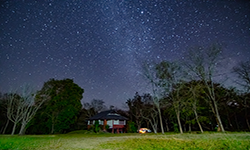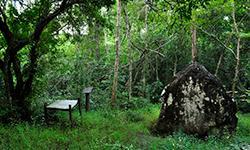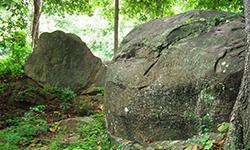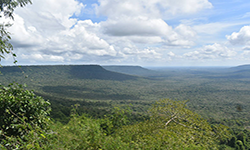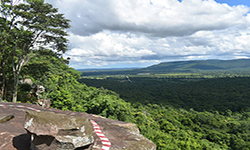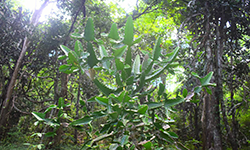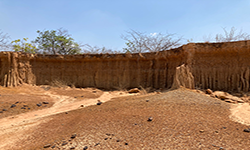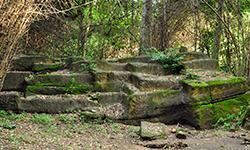Ta Phraya National Park
Contact Location : 72 Moo. 5, Thap Rat Sub-district, Ta Phraya District, Sa Kaeo Province 27180
Telephone Number : (+66) 8 1178 8119,(+66) 3 724 7933
Email : tapraya_np@outlook.com
Facebook : Ta Phraya National Park
Information
Ta Phraya National Park is part of the Phanom Dongrak Mountain range stretching along the east line to the west, between latitude 14 degrees 5 arcminutes North and 14 degrees 22 arcminutes North and longitude 102 degrees 30 arcminutes East to 103 degrees 14 arcminutes East. It is located at the southern part of Korat Plateu, with a total area of approximately 371,250 rai (594 square kilometers). The area covers two provinces: Sa Kaeo and Buriram Provinces. It's about 380 kilometers east of Bangkok, bordering Cambodia.
Background
The 1st Army Area requested the Royal Forest Department to consider establishing a forest in the Ban That Mountain Range which is an area that borders the three provinces consisting of Prachinburi, Nakhon Ratchasima province, and Buriram Province, to be a national park. The fertile forest conditions can be categorized as mixed deciduous forest, dry evergreen forest, and deciduous dipterocarp forest. The Royal Forest Department has considered and assigned Mr. Apisak Chattupornpong, Forestry Technical Officer 5 from Khao Yai National Park, to survey the Ta Phraya Forest, Dong Yai Forest, Ban Kruat Forest, the 5th land map of and nearby forests in Sa Kaeo and Buriram Province by order of the Royal Forest Department No. 1640/2534 dated September 2, 1991.
This area was an essential strategic point in the past. From 1972 to 1988, it was under the influence of the Communist Sectiony of Thailand. There was intense fighting between government officials and Thailand's communist terrorists, causing severe damage to both life and property. Until 1982, the Thai state adopted a policy of a political approach over the military, resulting in the communist armed forces of Thailand surrendering and transforming themselves into co-developers of the Thai nation. Eventually, peace in this area has returned.
Ta Phraya National Park has been declared as a National Park by a royal decree specifying the area of the 5th land map of Ban Kruat Forest and Dong Yai Forest in Thailand in the areas of Bueng Charoen, Chanthopphet, Sai Ta Ku, Nong Mai Ngamand Prasat Sub-district, Ban Kruat District, Non Din Daengand Lam Nang Rong Sub-district, Non Din Daeng Minor District, Lahan Sai District ,Samrong Mai, Nong Waengand Ta Chong Sub-district, Lahan Sai District, Buriram Province and Ta Phraya Forest in the area of Thap Ratand Thap Thai Sub-district, Ta Phraya District, Sa Kaeo Province. The announcement was published in the Government Gazette, Volume 113, Section 65 Ko, dated November 22, 1996, as the 82nd National Park of Thailand.
Note : After paying the entrance fee to the National Park, please carry the receipt for inspection.
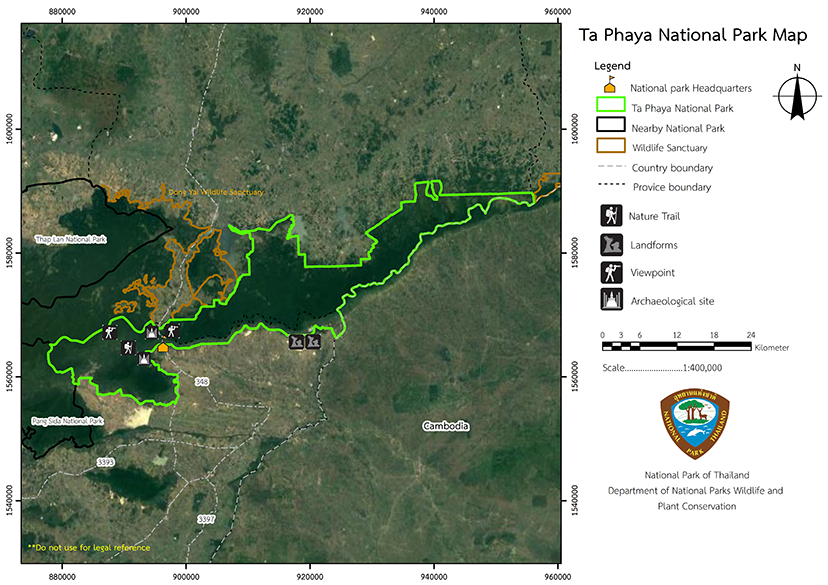
371,250 rai (594 square kilometers)
|
Klang Dong |
Khao Yak |
||
|
The Inscription of the Royal Command, Of King Rama V |
Banthat Mountain range Viewpoint |
||
|
Pha Daeng Viewpoint |
Salad Dai Forest |
||
|
Lalu (Rock formations) |
Lan Hin Tat (Ancient Quarry) |
||
Nature trails ⇔ Observe flowers/plants ⇔ Bird/Butterfly ⇔ Camping
Welfare shop : no available
Mobile phone signal :
1. National Park Headquarters area: AIS, TRUE, DTAC
2. Area of Ta Phraya National Park Ranger Station To Yo No. 4 (Klang Dong): AIS
|
|
Ta Phraya National Park is located in the southeast of the Khorat Plateau. The area is quite long, positioned in the west-east direction from Ban That Mountain range to Phanom Dongrak Mountain range at about 206 – 579 meters above mean sea level, with an average slope of 35 percent. The highest peak is on the western side of Ta Phraya National Park which is Phran Nut Mountain, at about 579 meters above sea level. The Ban That Mountain range's northern side is a long slope, while the southern side is a sheer cliff that descends to the low plains. Therefore, many streams and creeks flow from the mountains in the National Park to the north, such as the Nangrong River, the Changhan River, the Pa Thia River, and the Huai Sap Kra Don (flows into the Nangrong River), the Huai Tru Ma Miang and Huai Haeng (flow into the Changhan River), the Huai Hin, Huai Din Sai, and Huai Na Nuea (flow into the Pa Thia River), the Huai Phlu, Huai Mekha, Huai O Bok, and Huai Fai Mai. The Sa Ton River is the only main river that flows from the west to the southern part of the national park.
|
|
In the general climate of this region is influenced by southeast monsoon and northeast monsoons. During the southwest monsoon season, from mid-May to October, moisture is carried from the Andaman Sea and the Gulf of Thailand, causing this area to receive an average monthly rainfall of between 100 millimeters and 140 millimeters. The Phanom Dongrak Moutain range will collide with monsoon winds and rain on the windy side during the southwest monsoon season. However, the amount of rainfall depends on which direction the area is located in the Phanom Dongrak Mountain range. If the area is in the windward zone of the Phanom Dong Rak Mountain range, there will be more precipitation on the windswept side than on the windless side. It is influenced by the northeast monsoon during the winter. The temperature ranges from 24.9 to 27.7 degrees Celsius.
|
|
|
|
Ta Phraya National Park has a forest area of approximately 77 percent, or 300,000 rai (480 square kilometers), which excludes grassland and small plants. Forest areas Wildlife |
How to get there by car :
From Bangkok, head to Aranyaprathet District with a distance of 245 kilometers. Then take Highway No. 3068 (Aranyaprathet-Nang Rong), passing through Ta Phraya District to Chong Khao Tako which a is the entrance of Ta Phraya National Park Headquarters, with a total distance of 77 kilometers.
- National Park Ranger Station To Yo No. 4 (Klang Dong) - National Park Ranger Station To Yo No. 1 (Thap Thai)
- National Park Ranger Station To Yo No. 5 (Ba Ranae) - National Park Ranger Station To Yo No. 2 (Non Din Daeng)
- National Park Ranger Station To Yo No. 6 (Nong Phak Waen)
- National Park Ranger Station To Yo No. 3 (Ang Mekha)
-

